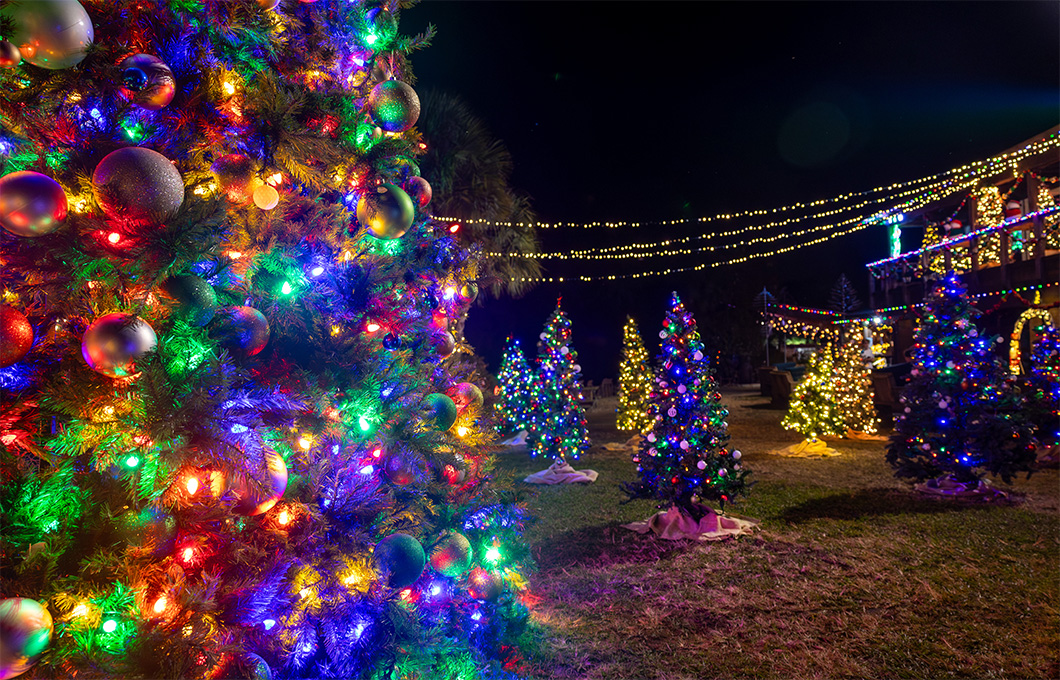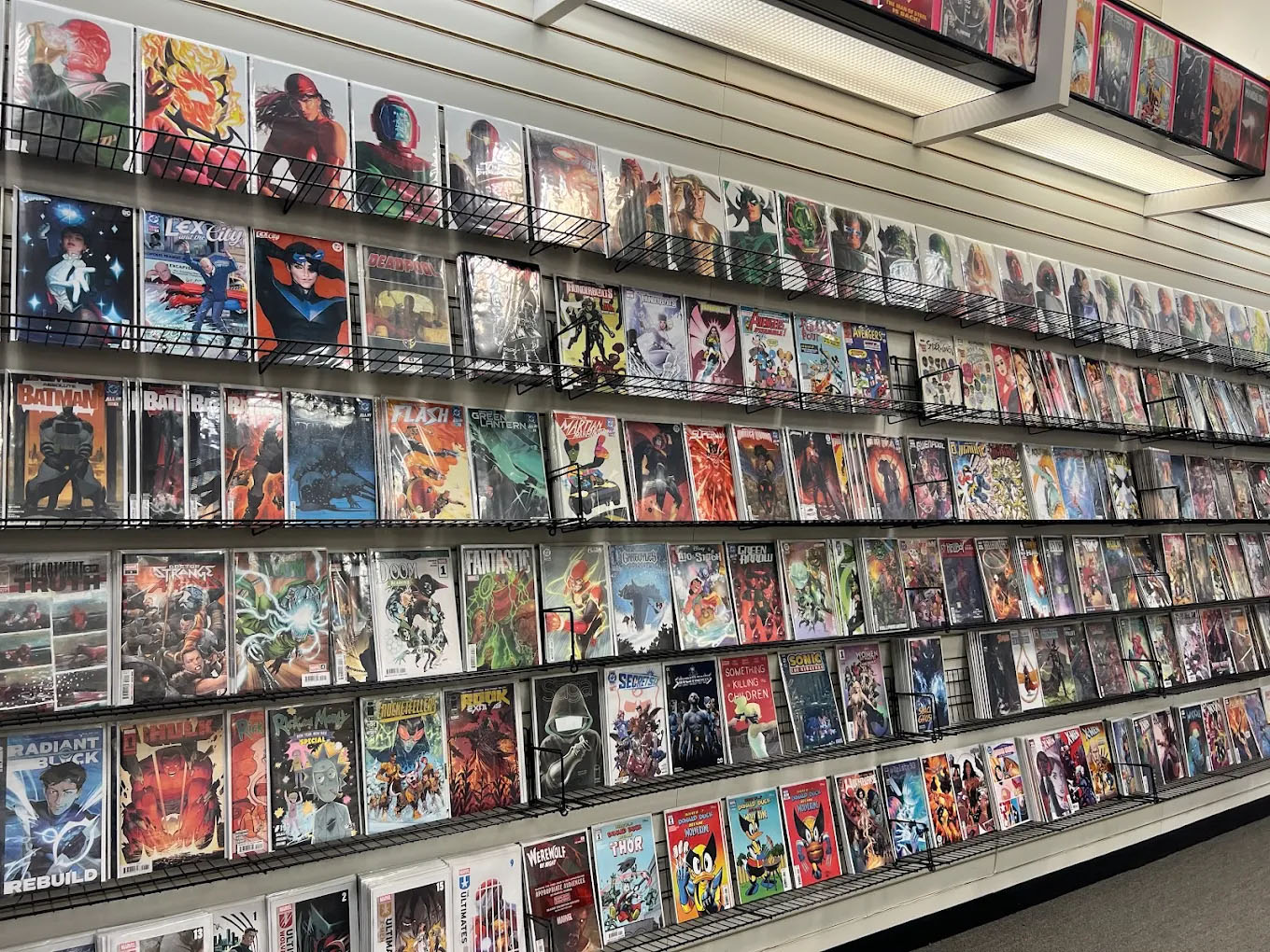By Daniella Hume, Mastropieces Productions
Agriculture isn’t just about crops and livestock—it’s an integral part of our local economy, culture, and tourism. In Seminole and Orange counties, farms are evolving beyond production to offer immersive experiences that connect communities with the land. From bee farms and citrus groves to agritourism destinations and educational programs, I was invited for a two-day farm tour highlighting how agriculture can be both a business and an experience.
Guided by Dr. Morgan Pinkerton, UF/IFAS Extension Seminole County, and Hannah Eason, UF/IFAS Extension Agent of Commercial Horticulture in Orange County, I joined a group of industry professionals, content creators, and community leaders to explore how farming and tourism intersect in Central Florida. The tour included hands-on experiences, expert insights, and a behind-the-scenes look at some of the region’s most innovative farms.
A Fresh Look at Seminole County’s Farming Future
Our journey began at Embassy Suites in Altamonte Springs, a perfect hub between Seminole and Orange counties. Overlooking Cranes Roost Park, the hotel provided a comfortable and convenient location for the tour, with easy access to major highways and scenic backroads. Upon arrival, I received a swag bag from Orlando North, Seminole County Extension, and Orange County Extension, filled with helpful materials to guide us through the experience. The hotel was clean, spacious, and comfortable—exactly what I needed before an action-packed farm tour.
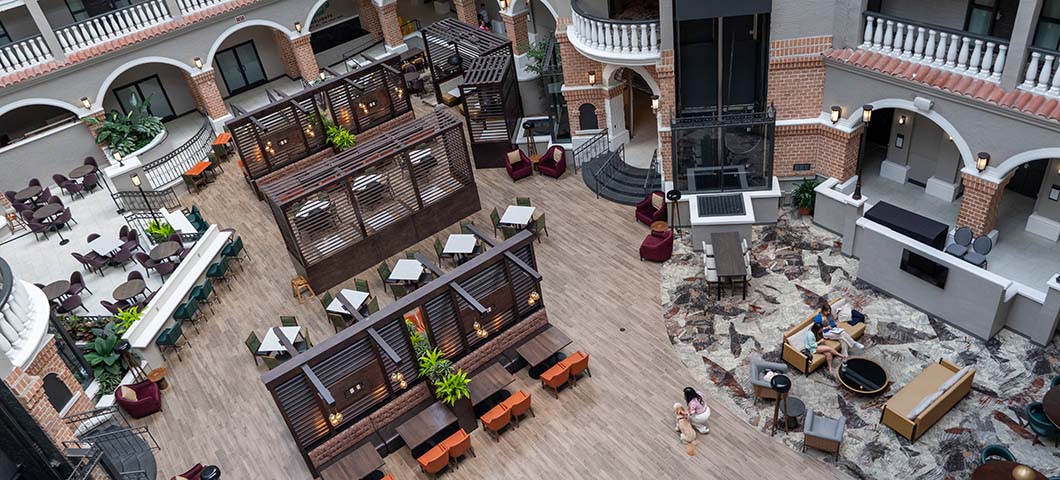
The staff was friendly, the location was ideal, and the atmosphere felt like a perfect blend of relaxation and readiness for the journey ahead. Even the morning breakfast exceeded expectations—good coffee (which is hard to find in hotels), fresh fruit, and eggs prepared just right. Another guest even stopped me in the elevator to rave about the coffee, and I had to agree—it was the little boost of energy we all needed to kick off the tour.
After a quick refresh in my room, I joined the group to begin the farm tour. We were picked up in a UF/IFAS Extension van, where representatives from the University of Florida Institute of Food and Agricultural Sciences (UF/IFAS) provided insights between stops. As we made our way to the first stop, Dr. Pinkerton and Hannah shared fascinating stories about Florida’s farming history, the challenges farmers face today, and how Extension works behind the scenes to support local agriculture in real time.
Connecting Communities Through UF/IFAS
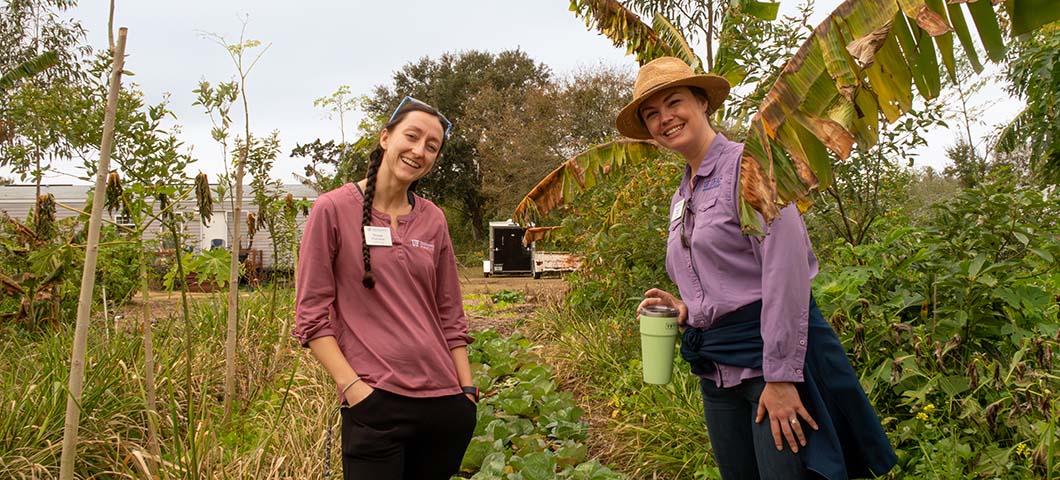
Before diving into the farm visits, we learned about UF/IFAS Extension and its vital role in Florida’s agricultural community. They aim to connect research, education, and real-world applications to support local farmers, businesses, and residents. “We’re like professors or researchers, but our job is working directly in the community to connect the dots,” Eason explained.
Throughout the tour, Dr. Pinkerton and Hannah kept us engaged with insightful stories and examples, highlighting the evolving landscape of Florida agriculture. From research labs to community gardens, UF/IFAS is a bridge between innovation and real-world solutions, making agriculture accessible and sustainable for all.
Dutch Mill Nursery: Rooted in Tradition, Growing Sustainably
Our first farm stop brought us to Dutch Mill Nursery in Sanford, a third-generation family operation that blends traditional farming practices with modern sustainability. Established in 1961, Dutch Mill has grown from a one-acre plot into a thriving 15-acre farm, home to Farmer Rob’s Vegetables and Lommerse Honey and Plants.
Walking through the greenhouses, the air was thick with the earthy scent of soil and growing plants. I couldn’t help but notice the rows of fresh vegetables and the hum of bees busy at work—a true sensory experience that captured the farm’s heartbeat.
Farmer Rob, aka Robert Lommerse, shared his family’s incredible story of resilience. “My grandfather immigrated from the Netherlands after World War II. He arrived in the U.S. in 1948, sponsored by a convent in Michigan, and worked in agriculture before eventually moving to Florida in 1957,” he said. “Starting with just one acre in 1961, my family slowly expanded the property piece by piece, building the business through dedication and hard work.”
At Dutch Mill, everything is grown sustainably, and produce is cut fresh to order. Their fertigation system blends nutrients directly into the irrigation water, reducing waste and improving efficiency. Rob walked us through how they manage crops seasonally, avoid synthetic fertilizers, and rely on natural pest management. The nursery even supplies fresh-cut flowers to Walt Disney World!
Dutch Mill Nursery isn’t just a farm—it’s a destination. Whether you’re a local gardener looking for veggie starts or a visitor eager to see how sustainable farming works, Dutch Mill offers a true farm-to-table experience.
Supporting Local Agriculture Through Education
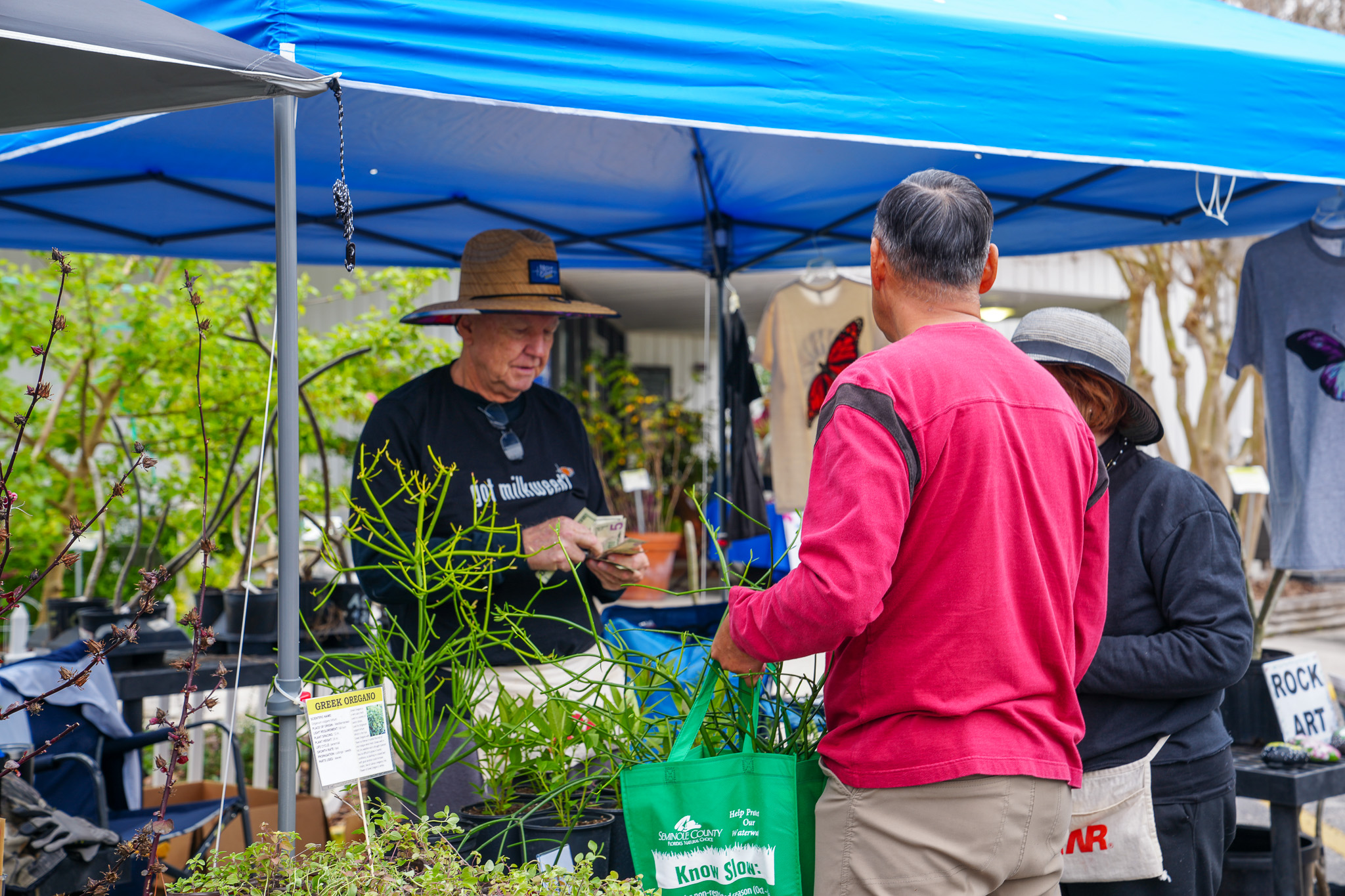
Our next stop was the Seminole County Extension Office in Sanford, a hub for community education and agricultural outreach. The Extension Office provides programs like 4-H Youth Development, Florida-Friendly Landscaping, and Master Gardener initiatives that empower residents to make sustainable choices in their homes and gardens.
“We’re a bridge between the university and the community,” Pinkerton explained. “Our goal is to provide research-based knowledge and training to help both adults and youth.”
We learned about their Florida-Friendly Landscape workshops, residential horticulture programs, and even classes on food systems and sustainable agriculture. It’s all part of a broader effort to ensure that everyone—from backyard gardeners to commercial growers—has the tools they need to thrive.
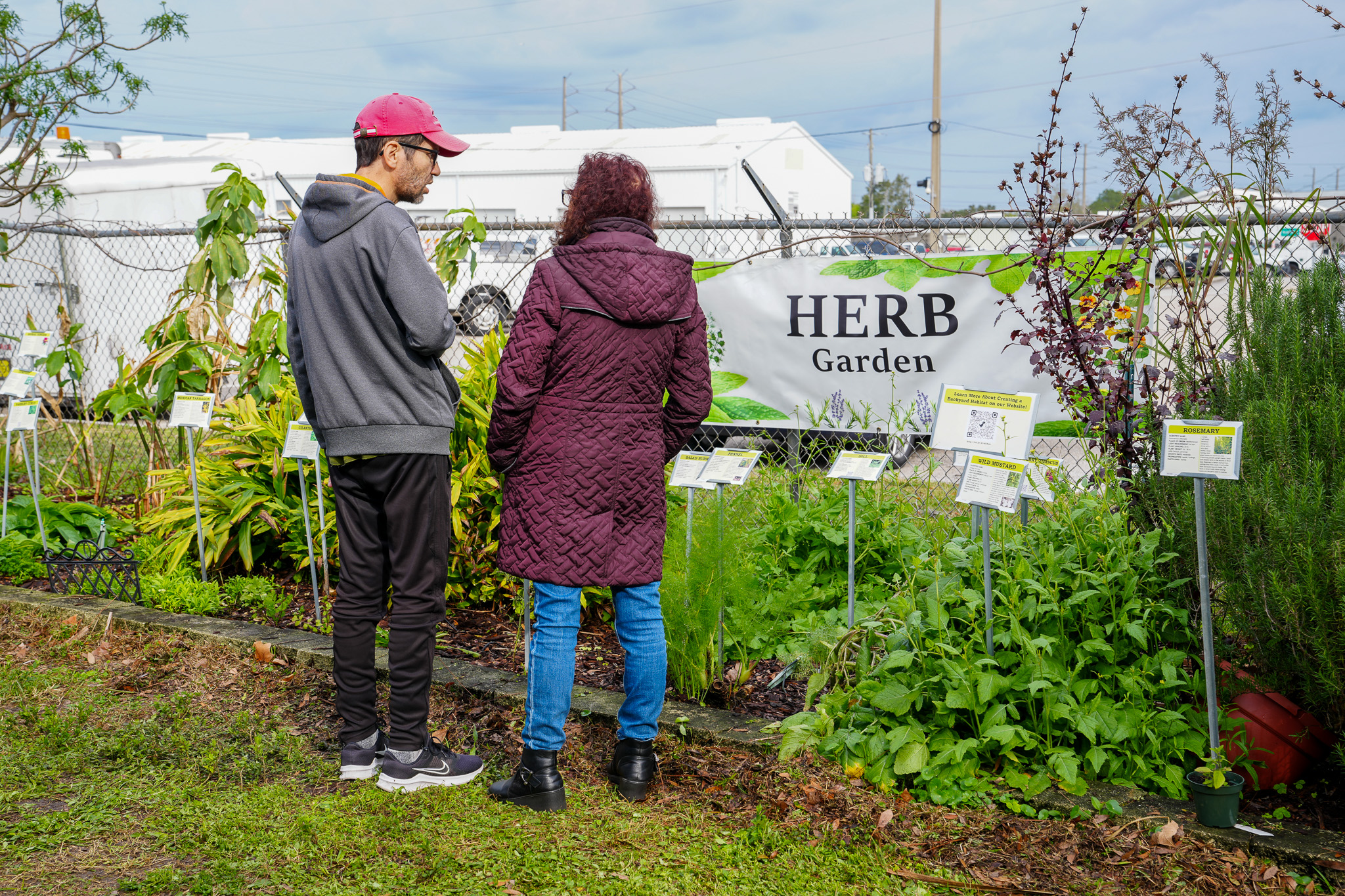
The passion from the team at UF/IFAS was infectious. It’s clear that they’re deeply committed to making sustainable agriculture accessible to everyone, and they play a pivotal role in keeping Florida’s farming legacy alive.
White’s Red Hill Grove: Preserving Citrus Heritage
Next, we visited White’s Red Hill Grove, a family-run farm preserving Florida’s citrus legacy. Once known for shipping gift fruit nationwide, White’s has transformed into a charming event venue complete with a farm stand, fresh-squeezed juice, and authentic Florida barbecue.
As we arrived, the smell of smoked meats filled the air, and we sat down to enjoy a barbecue lunch under the shade of citrus trees. Owner Ed White shared his family’s story and the challenges of citrus greening, a disease that has devastated Florida’s orange groves.
“Our family started in citrus in the early ’60s,” White explained. “We shipped gift fruit all over, but when citrus greening took over, it just became too expensive to keep going.”
Today, White’s Red Hill Grove remains a living piece of Florida’s farming history, offering guests a nostalgic experience and a chance to see citrus farming up close. It’s a beautiful example of how farms can pivot to agritourism and keep their legacy alive.
The Buzz at Black Hammock Bee Farms
Black Hammock Bee Farms in Oviedo is a buzzing example of how agritourism and small-scale farming can thrive together. Founded by Dennis “The Bee Guy” and Elizabeth “Queen Bee” Langlois, the farm started with bee rescue and relocation but has since grown into a full apiary offering pollination services and honey production for local farms.
As we arrived, Dennis greeted us warmly. “We’re going to teach you a little bit about honeybees, honey, and the agritourism side of things,” he said, leading us toward what will soon be the farm’s Extracting Center. Once complete, visitors will be able to walk through glass-walled rooms and watch the entire honey extraction process unfold—a bee’s-eye view of farm-to-jar production.
We suited up in protective gear for an up-close hive demo. Dennis explained how smoke keeps the bees calm by masking their communication signals. “Smoke works in two ways,” he shared. “It masks their alarm pheromones, and it makes them think there’s a fire. So, they fill up on nectar to prepare for evacuation, which keeps them focused on survival instead of defense.”
Spotting the queen bee was a highlight! She was easily recognized by her longer abdomen and the worker bees surrounding her protectively.
Back inside, we sampled different varieties of honey—each with its own flavor profile based on the flowers the bees had foraged. Dennis explained how location and season influence the honey’s taste. “If we place a hive in an orange grove, they’ll forage only orange blossoms, making orange blossom honey. Wildflower honey, on the other hand, has a variety of floral notes depending on what’s blooming.”
Beyond honey, the farm’s mission is to educate and empower future beekeepers. “People always ask how they can help save the bees,” Elizabeth shared. “The best way? Become a backyard beekeeper.”
Their beginner classes offer a gateway into the world of pollination and environmental stewardship—an inspiring way to make a direct impact from your own backyard.
From Farms to Pints: Sanford’s Craft Beer Scene
Our next adventure took us to downtown Sanford, where we explored the city’s vibrant craft beer scene with Sanford Tours and Experiences. Led by beer aficionado Gary Holmes, co-owner of Sanford Homebrew Shop and a Certified Beer Judge, our tour blended history, agriculture, and hops.
Though I’m currently expecting, I still got to enjoy the refreshing, hop-infused non-alcoholic options they offered. The bright, citrusy notes were a perfect nod to Florida’s agricultural roots.
Gary guided us through Sanford’s historic streets, stopping at local favorites like Celery City Craft and Dee’s Brothers Brewery. At each stop, we learned about Florida-grown hops, the state’s expanding craft beer industry, and the deep agricultural ties that make these brews possible.
“Florida’s beer scene is still young but growing fast,” Gary explained. “We’re starting to see more local ingredients like hops and grains, and that means more unique, homegrown flavors.”
Sanford Tours and Experiences doesn’t just offer beer tours—they also provide historic walking tours, giving visitors an authentic taste of the city’s past and present. Whether you’re a craft beer enthusiast or simply curious about Sanford’s story, this experience is a must.
A Farm-to-Table Celebration at Hollerbach’s German Restaurant
Our final stop for the day was a culinary highlight: a multi-course farm-to-table feast at Hollerbach’s German Restaurant in downtown Sanford. Chef Patrick Story, a sixth-generation Floridian, crafted a menu featuring locally grown ingredients from the farms we visited.
Our dinner unfolded in the Knight’s Hall, a medieval-inspired private dining space adorned with candlelight and rich wood finishes. As the courses arrived, Chef Patrick shared stories behind each dish. “When the opportunity to do this dinner came up, we were all in,” he said. “We used as much as possible from the farms we visited—making stock from whole chickens, creating house-made sauces, and incorporating Florida-grown squash and kale into the menu.”
We savored dishes like kale and roasted pumpkin salad with citrus honey vinaigrette, velvety pumpkin squash soup topped with roasted pepitas and crispy kale, and smoked sausage with local cheese grits sourced from a Florida mill. Even the wine selection celebrated local agriculture, with muscadine grape wine from San Sebastian Winery.
Christina Hollerbach, CEO of Hollerbach’s, reflected on the importance of local sourcing. “The hospitality industry depends on an entire ecosystem of growers, producers, and chefs,” she shared. “Events like this showcase farmers’ incredible work and remind people of everything that goes into bringing a meal to the table.”
This quarterly Chef’s Table dinner series is just one of many ways Hollerbach’s brings community and agriculture together, turning each meal into a story worth telling.
Everoak Farm: Regenerating the Land and Community
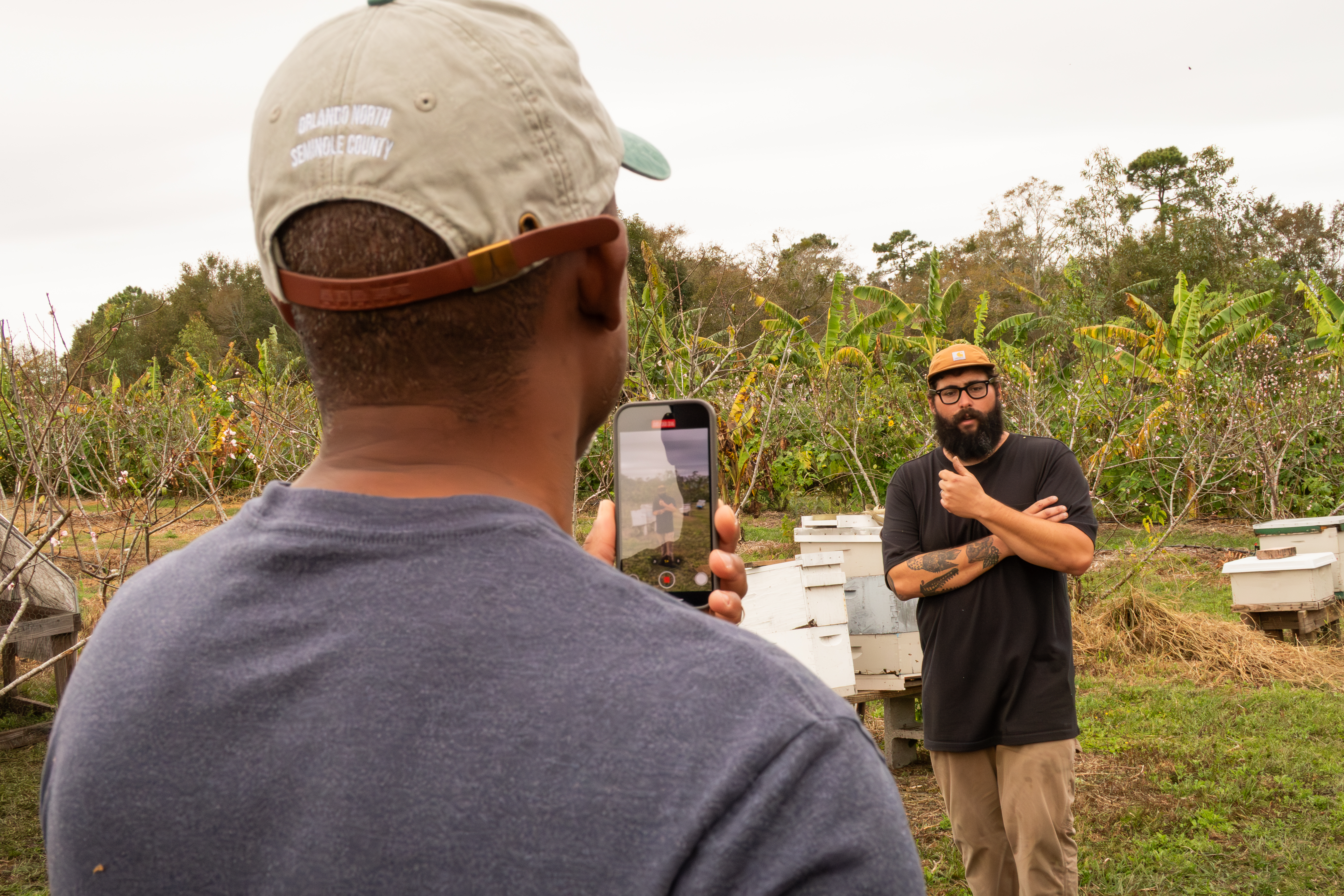
The next morning, we kicked off day two at Everoak Farm, a three-acre regenerative farm owned and operated by husband-and-wife team Mike and Nikki Garcia. Despite its modest footprint, Everoak supplies fresh produce and pasture-raised poultry to local restaurants, CSA members, and farmers’ markets.
Mike greeted us with contagious energy. His journey began not in the fields but in the kitchen, where he spent over a decade working in hospitality before trading his chef’s coat for farming tools. “I started backyard gardening in 2012 with a small 4×8 bed. Fast-forward 13 years, and here we are, running a farm just 10 minutes from where I started,” he shared.
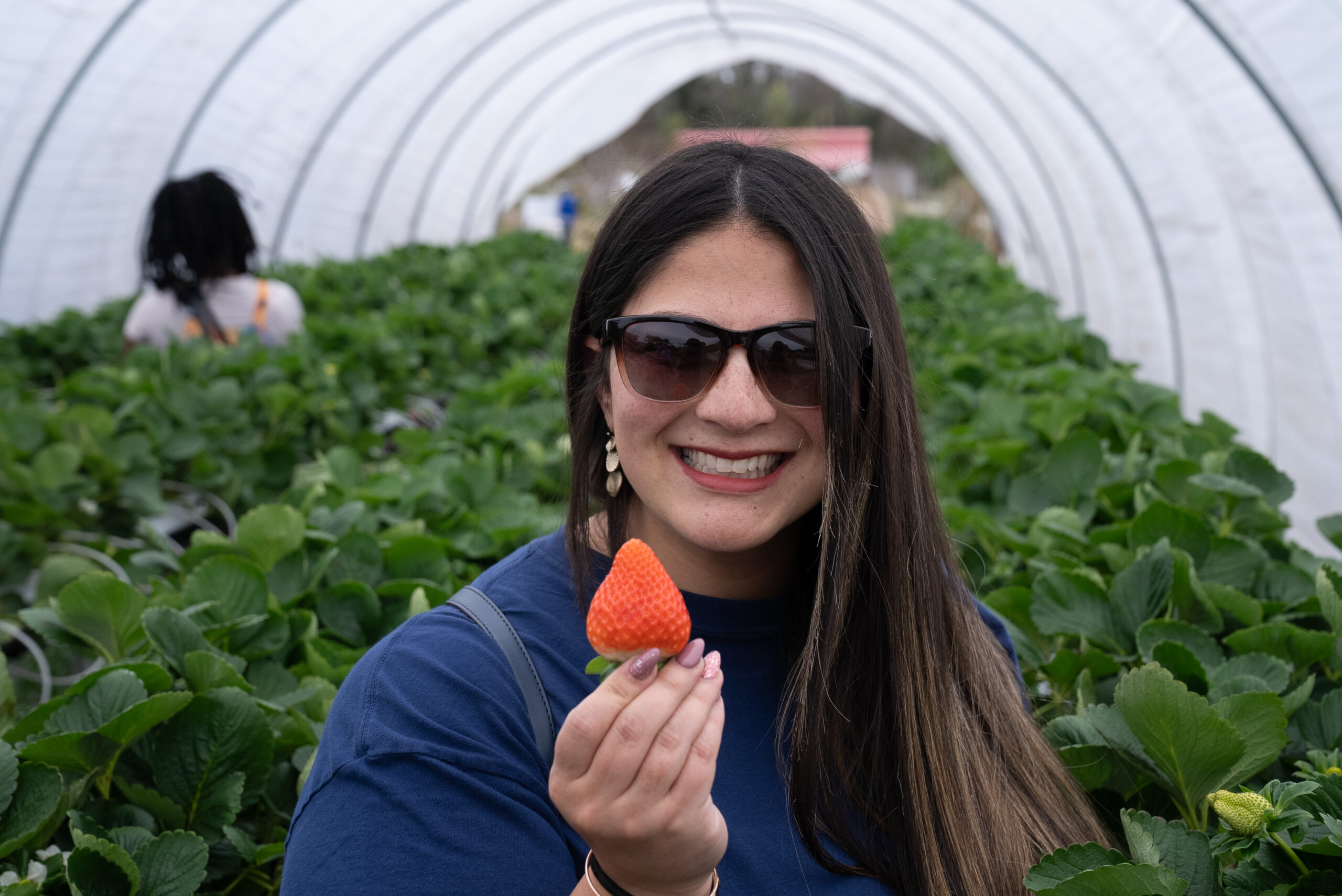
Everoak is Certified Naturally Grown, prioritizing soil health, biodiversity, and regenerative agriculture. They partner with O-Town Compost to integrate local food waste back into their soil and use mobile chicken coops to give their poultry constant access to fresh pasture.
“It’s a full-circle system,” Mike explained. “Some of our CSA members and restaurant partners are also O-Town subscribers, so food waste from their kitchens comes back here to nourish the soil that grows their next meal.”
The farm’s agroforestry approach layers fruit trees, nitrogen-fixing plants, and flowering species to build a resilient ecosystem. “We think about farming in layers,” Mike told us. “It buffers temperature extremes and creates a resilient system where everything supports everything else.”
Everoak primarily operates through a CSA model, providing members with weekly boxes of seasonal produce. “People have their neighborhood doctor, their neighborhood mechanic—why not their neighborhood farmer?” Mike asked with a smile.
Their vision extends beyond produce. With a focus on community, resilience, and sustainability, Everoak Farm is redefining what’s possible for small-scale urban farming.
Final Stop: UF/IFAS Extension Orange County
Our last stop brought us to the UF/IFAS Extension Orange County office, where County Director Kevin Kamm welcomed us to explore their Exploration Gardens—a living lab demonstrating sustainable landscaping and food production.
“We’re here to explore the many ways UF/IFAS supports agriculture, horticulture, and sustainable food systems in Florida,” Eason shared as we strolled through the vibrant gardens.
We saw native plants like Florida sage and yaupon holly—the only North American plant naturally containing caffeine—and learned about pollinator-friendly landscaping and water-saving techniques that homeowners and small farmers alike can use to increase biodiversity and reduce their environmental footprint.
“Our mission is to extend and implement research-based information that improves the lives of people in Orange County,” Kamm explained. From workshops and certifications to their Master Gardener Plant Clinic, the Extension office is a vital resource for local growers and gardeners.
As we walked, the conversation turned to the importance of urban agriculture. “Not everyone has access to large plots of land, but urban farming is proving you can grow food anywhere,” Eason said. “People are learning to maximize small spaces, using vertical farming, hydroponics, and container gardens to increase yield.”
The visit was a fitting end to our tour, showcasing how education and agriculture come together to empower communities and support local food systems.
Cultivating Connections: Agriculture and Tourism in Central Florida
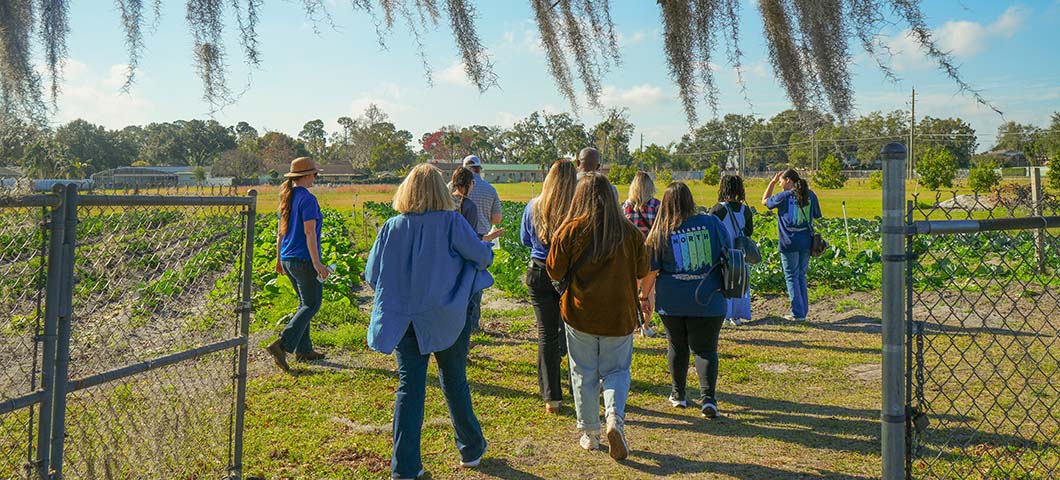
As our two-day tour came to a close, I found myself reflecting on everything we had experienced. From family-run citrus groves and buzzing bee farms to urban growers and community educators, every stop reinforced the same truth: agriculture is woven into the fabric of Central Florida.
More than just facts and photos, we carried home the stories of the people who pour their hearts into Florida’s land every day. Farmers, educators, chefs, and community leaders—each one is a steward of our region’s heritage and its future.
This experience was a powerful reminder that agriculture isn’t just the backdrop of Seminole County—it’s the soul. Whether you’re a grower, an explorer, or simply curious about where your food comes from, Central Florida’s farming story is still being written. And you’re invited to be part of it. Ready to plan your trip to Orlando North? Discover more things to see and do here!
A huge thank you to Farm Bureau Insurance and Seminole County Farm Bureau for sponsoring the meals at this event.
About the Author:

Daniella Hume, the owner of Mastropieces Productions, is a versatile creative professional specializing in writing, photography, digital media production, social media management, and video creation. With a deep passion for her community, Daniella’s work aims to inspire and uplift her audience while celebrating the beauty and vibrancy of the people and places around her. Her published work can be found throughout Central Florida and beyond, showcasing her commitment to the Sunshine State and dedication to sharing a positive message.

